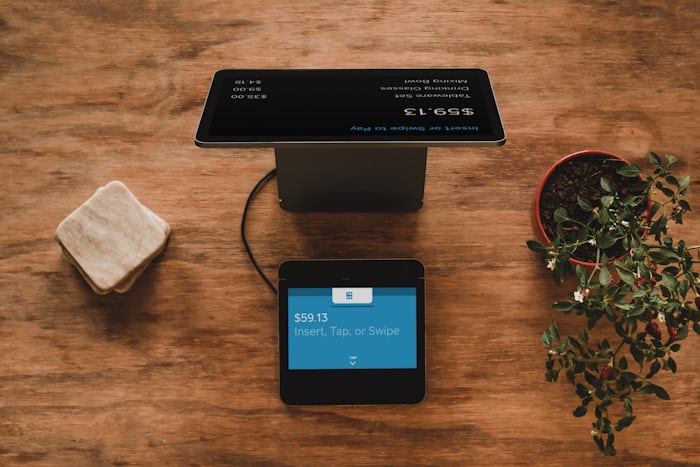Have you ever thought of starting your own business, but been daunted by the sheer amount of work involved? Well, you’re in luck! There are certain businesses that, with a bit of effort upfront, can be set up to run largely by themselves. These self-managed businesses can range from selling digital products to renting out property, meaning there’s bound to be a business model out there that suits you!
So, let’s delve into the world of self-managed businesses!
We’ll explore the reasons why someone might choose this route, along with the potential hurdles you might encounter when setting up a business that requires less time and resources than a traditional company.
Right, let’s get stuck into some specific self-managed business ideas you can use to kickstart your very own venture!
Why Choose A Self-Managed Business?
The main perk of a self-managed business is the potential for passive income.
Passive income is money you earn without actively having to work for it. For example, if you put £500 into a savings account that earns you £10 in interest over a year, you’ve just made £10 in passive income.
Having a stream of passive income is a fantastic way to bring in some extra cash – or even a significant amount of it!
What’s more, passive income can be a real asset when it comes to building wealth. It can help you pay off debts, boost your savings, or even fund those dream experiences, like that luxurious holiday you’ve been eyeing.
On a grander scale, establishing a steady stream of passive income could even help you create generational wealth for your children. This can ultimately give them the freedom to pursue their passions or strike out on their own, all while maintaining a certain standard of living.
It’s important to note, however, that passive income streams often require some initial effort to get up and running. Many forms of passive income, like self-managed businesses, will also require ongoing maintenance to keep them ticking over.
Laying the Groundwork for Self-Managed Businesses
Before you can reap the rewards of a self-managed business, there’s some groundwork to be done. Unlike a “set it and forget it” approach, most self-sustaining businesses require some initial effort.
It’s crucial to consider how much time, money, and effort you’re realistically able to invest upfront before you take the plunge into launching and running your own business. Even a self-managed business will still require your input in two key ways:
Getting Started: Initial Costs and Human Resources
The initial investment of time and money is a major hurdle for many aspiring business owners. While some businesses require less capital and manpower to get off the ground, others require significant effort just to reach profitability.
Building a solid foundation for a self-managed business often requires a substantial upfront investment in terms of both time and money. It’s not a case of “set it and forget it.”
Some self-managed businesses can be quite expensive to launch, while others will require a lot of sweat equity from you to get them running. The most lucrative ones often demand a combination of both.
Here’s a breakdown of the key considerations:
- Investment outlay: This refers to the initial financial resources you’ll need to get your business started. This could include things like equipment, inventory, marketing costs, and legal fees.
- Work equity: This refers to the amount of time and effort you’ll need to invest in your business, particularly in the early stages. Even self-managed businesses require ongoing attention to tasks like customer service, marketing, and product development.
The good news is that many self-managed businesses won’t require a huge chunk of your time after that initial investment.
Ongoing Maintenance
So, you’ve launched your business and it’s up and running. Time to kick back, put your feet up, and watch the money roll in, right?
Not quite. Even a well-oiled self-managed business will still require some upkeep or oversight from time to time, such as:
- Maintaining physical spaces: This could involve anything from cleaning an office to ensuring the smooth running of machinery on a rental property.
- Record-keeping and bookkeeping: Keeping on top of your finances is essential for any business. This may involve tasks like logging sales, paying bills, and submitting tax returns.
- Setting and monitoring goals: Every business needs direction. Regularly reviewing your goals and making adjustments as needed will help keep your venture on track.
- Developing new products or services: Staying ahead of the curve is important, even for self-managed businesses. Consider how you can expand your offering to attract new customers.
- Customer service: Keeping your customers happy is key to building a successful business. This may involve responding to queries, resolving issues, and providing ongoing support.
- Administrative tasks: There will always be some mundane administrative tasks to complete, such as scheduling appointments or managing your email inbox.
- Marketing and promotion: You’ll still need to find ways to get your business noticed. This could involve online marketing, social media engagement, or even local advertising.
The good news is that you don’t have to do all of these things yourself! Many business owners outsource tasks to freelancers or virtual assistants to free up their own time.
5 Types of Self-Managed Businesses
Now you have a better idea of the effort involved in starting and running (mostly) on your own. Let’s explore some specific examples of self-managed businesses…
Let’s delve into the different types of self-managed businesses first.
There are four main categories that most self-sustaining businesses typically fall into:
- Digital Products: This category encompasses products sold online, such as ebooks, software, or online courses.
- Physical Products: These are tangible goods that you sell and ship to customers, such as handmade crafts or clothing.
- Rental Properties: This involves owning and renting out property, like apartments or vacation homes.
- Affiliate Marketing: This involves promoting other people’s products or services and earning a commission on each sale you generate.
Each category has its own pros and cons, and the start-up costs and ongoing workload can vary significantly. For example, launching an online business is generally less expensive upfront than starting a business with a physical location.
With these categories in mind, let’s explore some specific examples of self-managed businesses to get your creative juices flowing! This will help you brainstorm ideas for your next venture.
1. ATMs and Vending Machines
You might be surprised to learn that many ATMs and vending machines are actually owned and operated independently!
Vending machine and ATM owners typically pay a commission to have their machines placed on the premises of businesses like supermarkets, hotels, and restaurants. The owner then earns money from either the goods sold (vending machines) or the user fees (ATMs).
To get started in this type of business, you’ll need to find and purchase your machines. The initial investment can vary depending on the type of machine, the number of locations you secure, and the overall size of your operation. It’s not uncommon for this cost to run into the thousands of pounds.
Finding Locations:
Once you’ve secured your machines, the next step is to find suitable locations to place them. Look for establishments or public spaces with high footfall, such as supermarkets, transport hubs, office buildings, or leisure centres.
Stocking and Maintenance:
After your machines are installed, you’ll be responsible for keeping them stocked and in good working order. This might involve regular refilling of vending machines and preventative maintenance for both ATMs and vending machines.
The Rewards:
The good news is that you’ll profit from each sale or transaction made using your machines. So, if you secure a busy location, you could see healthy returns quite quickly.
Pros of Vending and ATM Businesses:
- Relatively Low Start-Up Costs: Especially if you opt for second-hand equipment, the initial investment can be quite manageable.
- Low Risk: You can start small and minimise risk by starting with a single machine and growing your operation gradually.
- Scalability: It’s easy to expand your business by adding more machines to existing locations or placing them in new locations altogether.
- Adaptability: You can tailor your product offerings to suit the specific needs of your target market. For example, a vending machine in a gym might stock healthy snacks and protein drinks, whereas one in an office building might offer a wider variety of sweet treats and hot drinks.
Cons of Vending and ATM Businesses:
- Time Commitment: Regularly checking your machines to ensure they’re stocked and functioning properly takes time.
- Restocking Costs: You’ll need to factor in the ongoing expense of refilling vending machines with stock.
- Technical Issues: Both ATMs and vending machines can experience technical problems that require repair.
- Security Risks: There’s always a risk of theft or vandalism, so you’ll need to consider security measures to protect your equipment.
2. Party Equipment Rentals
Ever thrown a big bash or celebration? Perhaps a friend rented a bouncy castle for their child’s birthday, or you hired linens for your wedding reception.
The mastermind behind those rentals? A party equipment rental company! The good news is that party equipment rentals can also be a viable option for a self-managed business. By outsourcing some of the manual labour, like deliveries and collections, you can free up your own time.
Choosing the Right Equipment:
The key to a successful party equipment rental business is ensuring you have items in high demand, both now and in the foreseeable future. Here are some popular choices to consider, but your final selection will depend on your budget:
- Audio-visual equipment: This could include things like projectors, screens, speakers, and microphones.
- Staging and dance floors: Perfect for creating a dedicated event space.
- Décor: Think drapes, table linen, chair covers, and fairy lights.
- Furniture: Tables, chairs, and other seating options are essential.
- Entertainment equipment: Bouncy castles, photo booths, and games can be a big hit, especially at children’s parties.
- Tableware and accessories: Plates, cutlery, tablecloths, napkins, and centrepieces can elevate any event.
Budget Considerations:
If you have a larger budget, you could invest in more expensive audio-visual equipment to cater to corporate events or conferences.
While high-end audio-visual equipment might be tempting, starting with something like tableware can be a more cost-effective option, especially as tableware can often be purchased in bulk for a discount.
Pros and Cons of Party Equipment Rentals:
Pros:
- High Profit Margins: Compared to selling equipment, rentals offer higher profits because you only need to purchase the items once.
- Recurring Business: The potential for repeat business from satisfied customers is a major advantage.
- Scalable Services: You can expand your services to include delivery, set-up, and take-down for an additional fee.
Cons:
- Damage and Theft: You’ll need to factor in the cost of repairs or replacements due to damaged or stolen equipment.
- Hands-on Management: Physical products require hands-on management, including tasks like customer collections and returns, as well as inspecting equipment for damage upon return.
3. Print-on-Demand Business
Got a flair for design? Then a print-on-demand business might be a perfect fit for you!
Print-on-demand companies allow you to create designs that are printed onto products like t-shirts, mugs, and more, but only when a customer places an order. This eliminates the need for upfront bulk orders from a traditional print shop, which can be a financial risk.
One of the biggest advantages of print-on-demand is the minimal effort required on your part. Simply upload your design, choose the items you want it printed on, and wait for orders to roll in. The printing company handles everything else, from production and fulfilment to shipping the finished product to your customer.
Taking Your Print-on-Demand Business Live:
Let’s use a print-on-demand t-shirt business as an example. Once you’ve chosen a print-on-demand provider, you’ll link your website to their system and upload your designs.
Here’s how it works:
- A customer places an order for a t-shirt with your design on your website.
- The order automatically gets sent to your chosen print-on-demand company.
- They handle the entire process, from printing the design on the t-shirt to fulfilling and shipping it directly to your customer.
- Once the printing company deducts their fees and the cost of the t-shirt itself, you’ll receive the remaining profit from the sale.
- The beauty of print-on-demand is that you don’t even need to be a graphic design whizz to get started. Many print-on-demand companies offer free-to-use (and sell!) graphics that you can incorporate into your online store’s merchandise.
Pros of a Print-on-Demand Business:
- Low Initial Costs: You only pay when a customer makes a purchase, saving you from the upfront expense of a website or listing fees.
- Simple Setup: Choose a few designs, upload them, and you’re ready to go!
- Minimal Time Commitment: Once you’ve uploaded your designs, there’s very little ongoing maintenance required.
Cons of a Print-on-Demand Business:
- Reduced Profit Margins: After covering the cost of the item and the printing company’s fees, your profit margin may be smaller.
- Limited Control over Quality: Most print-on-demand companies don’t accept returns, and you have less control over the overall quality of the finished product.
- Potential for Product Availability Issues: There’s a chance you might encounter stock shortages or printing delays.
4. Dry Cleaners
Dry cleaners are a well-established type of independently operated business, and for good reason – they generally boast a high success rate. This is a major perk for new business owners, offering a higher chance of getting off the ground.
While the initial costs of setting up a laundromat can be steeper compared to other businesses, many dry cleaning entrepreneurs choose to buy an existing business. This allows them to take over an already-running operation, ideally one that’s already profitable. This lets them test the waters and get a feel for the business without starting completely from scratch.
If you have the capital to invest in a bricks-and-mortar premises and the equipment to run it, you could be well-suited to opening a laundrette. The laundrette business model is often successful, and you might also be able to secure business financing for it.
Pros of becoming a laundry owner:
- High chance of business success
- Strong return on investment (ROI)
- Essential service with consistent income
- Straightforward business model; the only equipment needed is plumbing connections, washing machines, and dryers
Cons of becoming a laundry owner:
- High initial investment
- Potential for equipment breakdowns and expensive repairs
- Competitive industry
- Risk of vandalism or disruptive customers
5. Sales of Digital Products
It’s unsurprising that there’s a thriving market for digital goods, given how much time we spend online!
Any product created and sold online is considered a digital product. There’s no physical item to handle, ship, or store. Common digital products include:
- E-books
- Online templates (including website and social media templates)
- Digital music downloads
- Online courses
- Downloadable art
While establishing sales of digital products can take some time, the incredibly low entry costs make this a fantastic option for a self-sustaining business. Once created, your digital product can be sold over and over again with minimal additional effort.
For example, you could create a digital illustration that customers can buy and print for use as wall art in their homes. Unlike a physical print, you don’t need to produce a new one for each sale. Instead, your artwork can be purchased by countless customers, again and again.
You can sell your products through your own website, although many digital marketplaces like Etsy offer a platform for sellers.
Pros of selling digital products:
- No stock control issues: There’s no need to worry about running out of inventory or managing physical stock levels.
- Minimal launch costs: You can start with very little upfront investment compared to physical products.
- No storage or shipping fees: No need for warehouse space or packaging materials, saving you money.
- Unlimited sales potential: You can sell each digital product countless times without having to reproduce it.
Cons of selling digital products:
- Reduced profit margins: Digital products tend to be priced lower than physical goods, potentially leading to lower profits per sale.
- Competitive marketplace: The market for digital products can be saturated, making it harder to stand out.
- Risk of copyright infringement: It’s important to be mindful of copyright to avoid accidentally using someone else’s work or having your work stolen.
Conclusion
So, are you ready to become your own boss and enjoy the freedom of a self-managed business? With careful planning and the right idea, you can be well on your way to achieving passive income and financial freedom.
Remember, while these businesses require less day-to-day involvement, some upfront work and ongoing maintenance are still essential for success.
Choose the business idea that sparks your passion, and get ready to be your own boss!





